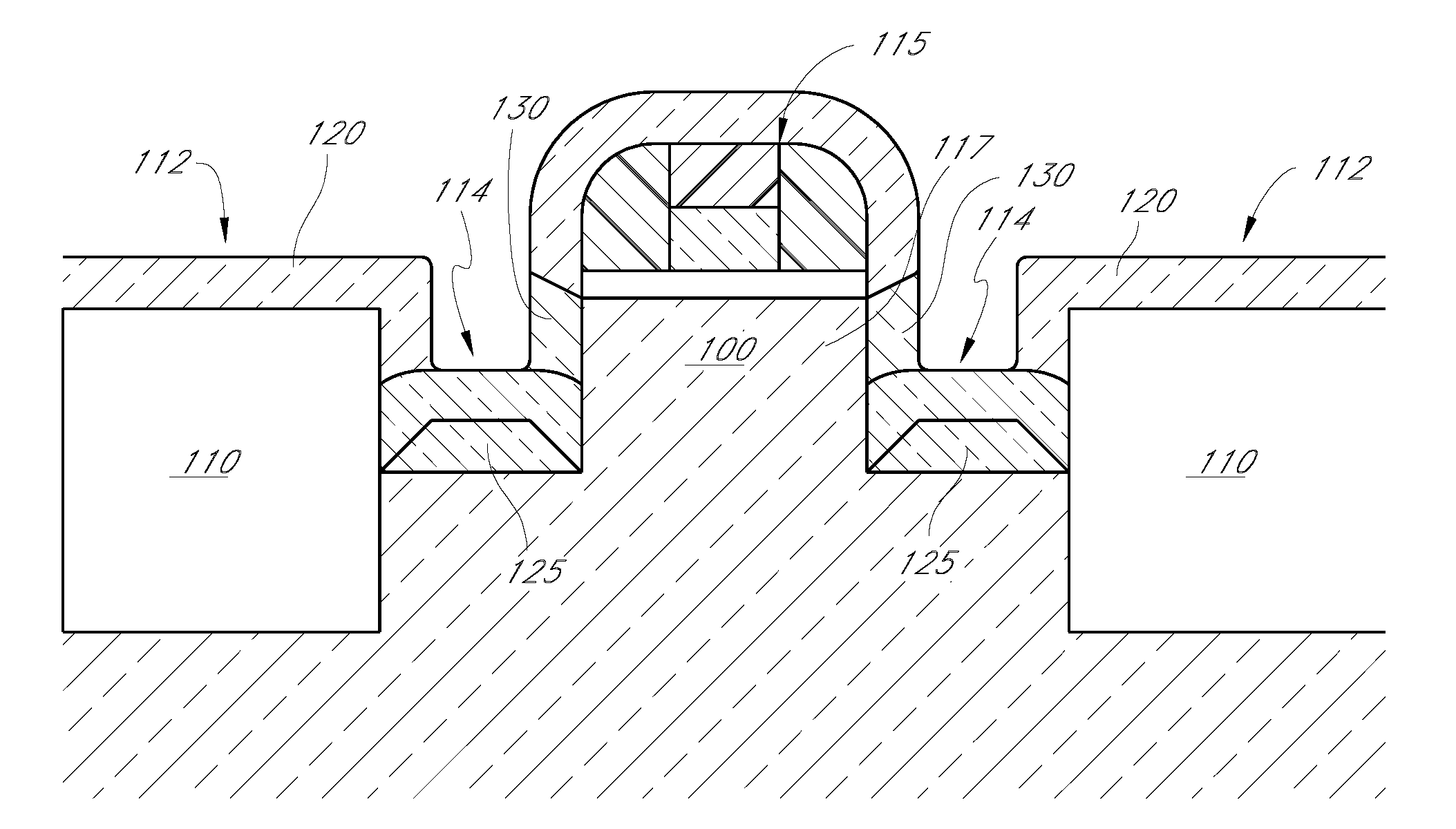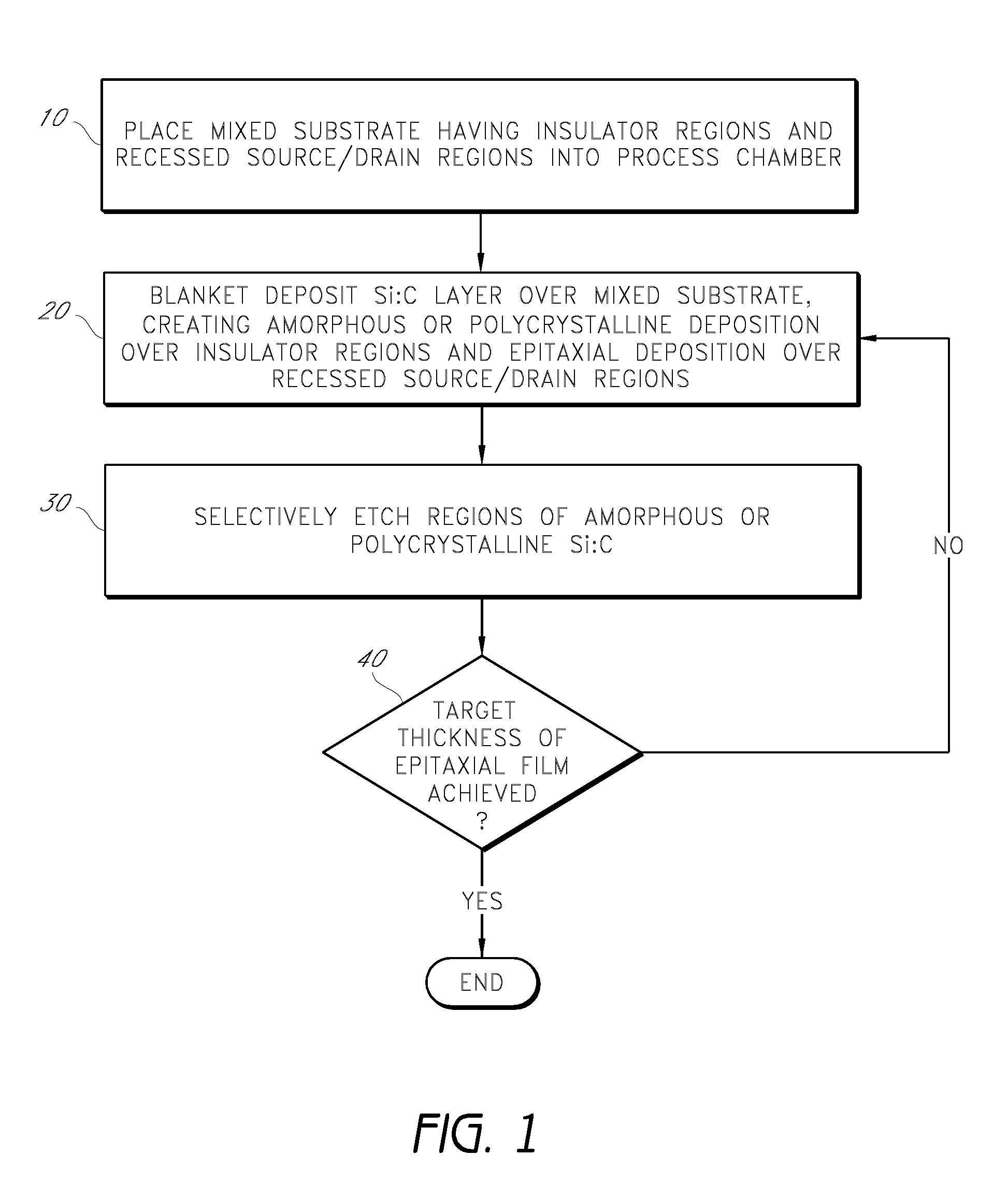Selective epitaxial formation of semiconductor films
a technology of epitaxial formation and semiconductor, applied in the direction of basic electric elements, electrical equipment, semiconductor devices, etc., can solve the problems of non-substitutional doping and complex substitutional doping in the pla
- Summary
- Abstract
- Description
- Claims
- Application Information
AI Technical Summary
Benefits of technology
Problems solved by technology
Method used
Image
Examples
Embodiment Construction
[0032]Deposition techniques often attempt to tailor the amount or kind of deposition in different regions of a substrate. For example, U.S. Pat. No. 6,998,305 recognizes that simultaneous etch and deposition reactions are know for selective deposition on silicon without depositing on silicon oxide. To control deposition on a third type of surface, namely an exposed transistor gate, the '305 patent teaches cyclically alternating a selective deposition with an etch phase. However, the inventors have recognized that selective deposition chemistries sometimes have undesirably effects on the deposited layers. While the described embodiments involve the specific example of carbon-doped silicon for NMOS applications, the skilled artisan will appreciate that the methods described herein have application to a variety of semiconductor applications where selective formation of a layer is desired but etchants can interfere with desired properties of the deposited layer.
[0033]Deposition methods ...
PUM
| Property | Measurement | Unit |
|---|---|---|
| band gap | aaaaa | aaaaa |
| deposition temperature | aaaaa | aaaaa |
| deposition temperature | aaaaa | aaaaa |
Abstract
Description
Claims
Application Information
 Login to View More
Login to View More - R&D
- Intellectual Property
- Life Sciences
- Materials
- Tech Scout
- Unparalleled Data Quality
- Higher Quality Content
- 60% Fewer Hallucinations
Browse by: Latest US Patents, China's latest patents, Technical Efficacy Thesaurus, Application Domain, Technology Topic, Popular Technical Reports.
© 2025 PatSnap. All rights reserved.Legal|Privacy policy|Modern Slavery Act Transparency Statement|Sitemap|About US| Contact US: help@patsnap.com



